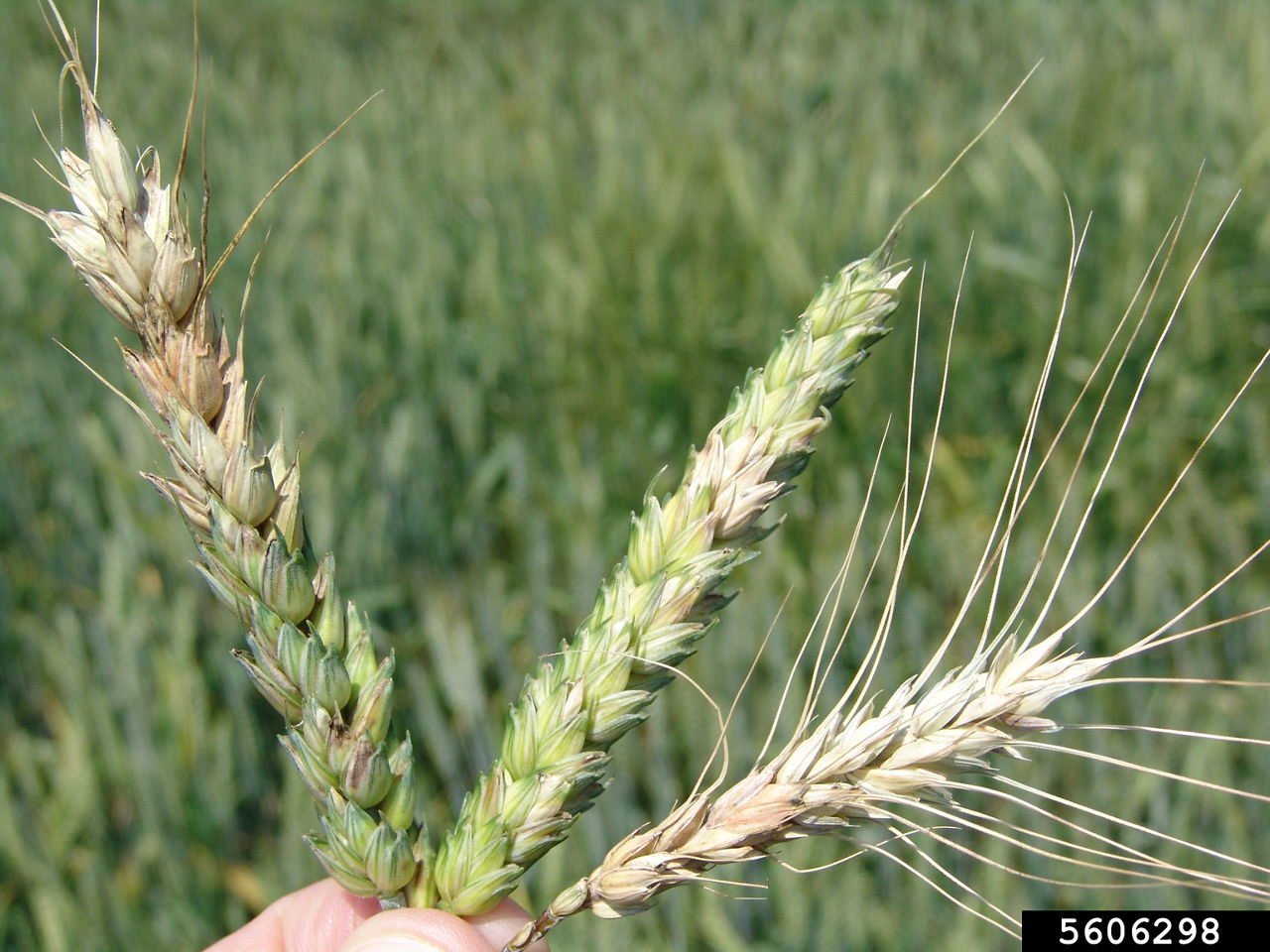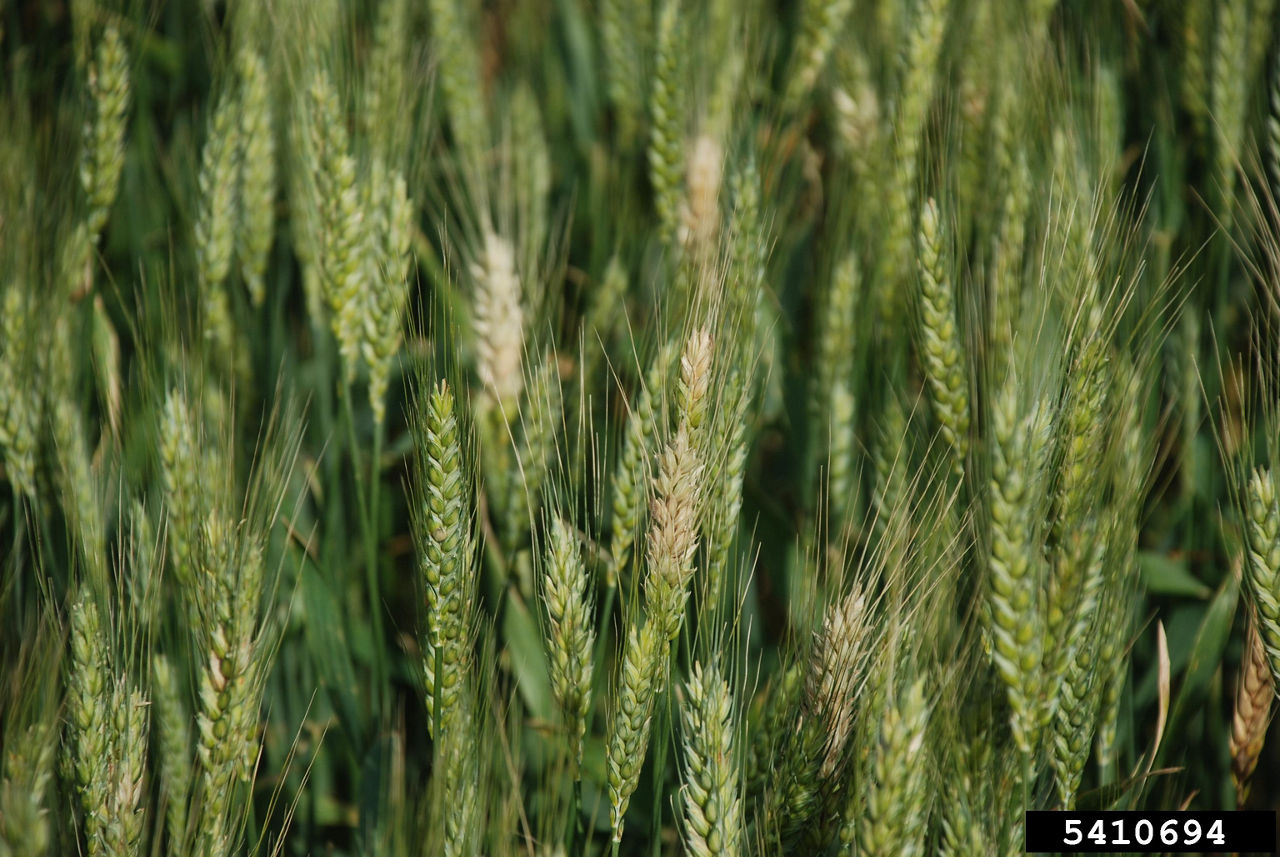Managing Fusarium Head Blight in Winter Wheat
July 6, 2021
Disease and Significance
Fusarium head blight (FHB), also called head scab, is primarily caused by the fungal pathogen Fusarium. There are several different species of Fusarium that can cause infection, the one that is the biggest concern due to yield and quality loss is Fusarium graminearum. FHB can be a devastating disease resulting in premature bleaching of the wheat head, yield loss, low test-weights, poor seed quality, and contamination of the grain with the mycotoxin deoxynivalenol (known as vomitoxin, or DON), which may cause significant health problems to domestic animals and humans.1
Symptoms
FHB symptoms first occur shortly after flowering, and are confined to the wheat head, grain, and may occasionally be observed on the peduncle (stem near the wheat head). Bleaching or premature whitening is a diagnostic symptom of FHB. Bleaching generally appears near the middle of the head, on the first florets to flower, but can occur anywhere on the head (Figure 1).1 Symptoms may begin with one or more spikelets, and over time the bleaching may progress throughout the entire head. Infected heads are easily visible in a green field (Figure 2). If the peduncle is infected early, the entire head will become sterile. Infected kernels that are bleached and shriveled are commonly referred to as Fusarium-damaged kernels, scabby kernels, or “tombstones” (Figure 3).2 In wet and humid environments, pink to orange colored spore masses (sporodochia) may be visible on infected spikelets. Later in the growing season, bluish-black spherical bodies may appear on the surface of affected spikelets, these are the sexual structures of the fungus known as perithecia (Figure 4).3




Risk Factors
Fusarium spp. overwinter on the infected residue of a host plant. Humid weather the following spring promotes the production and dispersal of spores. Wheat is susceptible to FHB infection at flowering (Feekes 10.5) through early dough stage (Feekes 11.2).1 Infection risk factors include:
- Excessive moisture before and during flowering
- Warm, wet spring
- Irrigation
- Planting wheat following a host crop
- No-till or reduced tillage
- Susceptible cultivars
Disease Management
Disease management for FHB requires an integrated approach. This includes selecting tolerant wheat varieties, planting high-quality seed, host stubble management, crop rotation, irrigation management, and timely application of fungicide.1
Tolerant Cultivars
Using high-quality seed and selecting cultivars with tolerance to FHB is an important step in mitigating disease development. Planting cultivars with differing flowering dates will also help to lessen the risk of FHB.
Crop Rotation
Crop rotation to a non-host crop, such as alfalfa or soybeans, can reduce the disease inoculum over time.1 Corn, sorghum, and wheat are all host crops of the fungus. Corn is a primary host crop of fusarium; therefore, planting wheat after corn should be avoided. In corn, the fungus is commonly known by its sexual phase, Gibberella zeae, which causes Gibberella stalk and ear rot. While wheat following corn is the primary concern, wheat following scabby wheat should also be avoided.
Irrigation Management
In irrigation systems, the crop canopy should be allowed to completely dry between irrigations to help manage disease severity.5
Fungicide
The optimal timing of fungicide application is at approximately 15% flowering (Feekes 10.5.1 or Zadoks 60) though applications made shortly after could still provide a benefit if environmental conditions are favorable for disease development. Thorough coverage is essential for maximum suppression of the fungus. Triazole fungicides are recommended to manage FHB.1 Fungicides containing a strobilurin should not be used to manage FHB as these fungicides can increase the level of DON in the grain.4 As always, remember to check the product label for specific application instructions, including the pre-harvest interval, when applying any fungicide to your wheat crop. Fungicides that are labeled for suppression of FHB in wheat include the Bayer Prosaro® fungicide.

Sources:
1Wise, K., Woloschuk, C. and Freije, A. 2015. Fusarium head blight (head scab). Purdue Extension. BP-33-W. https://www.extension.purdue.edu
2 Wegulo, S.N, Bockus, W.W., Nopsa, J.F.H., Peiris, K.H.S., Dowell, F.E. 2013. Integration of fungicide application and cultivar resistance to manage fusarium head blight in wheat. https://www.intechopen.com/books/fungicides-showcases-of-integrated-plant-disease-management-from-around-the-world/integration-of-fungicide-application-and-cultivar-resistance-to-manage-fusarium-head-blight-in-wheat
3 Schmale, D. and Bergstrom, G. 2003. Fusarium head blight (FHB) or scab. 2010. http://www.apsnet.org.
4 Telenko, D. 2020. Foliar diseases of wheat and fusarium head blight (scab) management. Purdue Extension. https://extension.purdue.edu/fieldcroppathology/2020/05/20/foliar-diseases-of-wheat-and-fusarium-head-blight-scab-management-2/
5 Wegulo, S., Jackson, T., Baenziger, S., Carlson and M., Nopsa, J. 2008. Fusarium head blight of wheat. EC 1896. University of Nebraska Extension. http://extension.unl.edu/
Web sources verified 5/30/21.
5023_S1
Seed Brands & Traits
Crop Protection
Disclaimer
Always read and follow pesticide label directions, insect resistance management requirements (where applicable), and grain marketing and all other stewardship practices.
©2024 Bayer Group. All rights reserved.